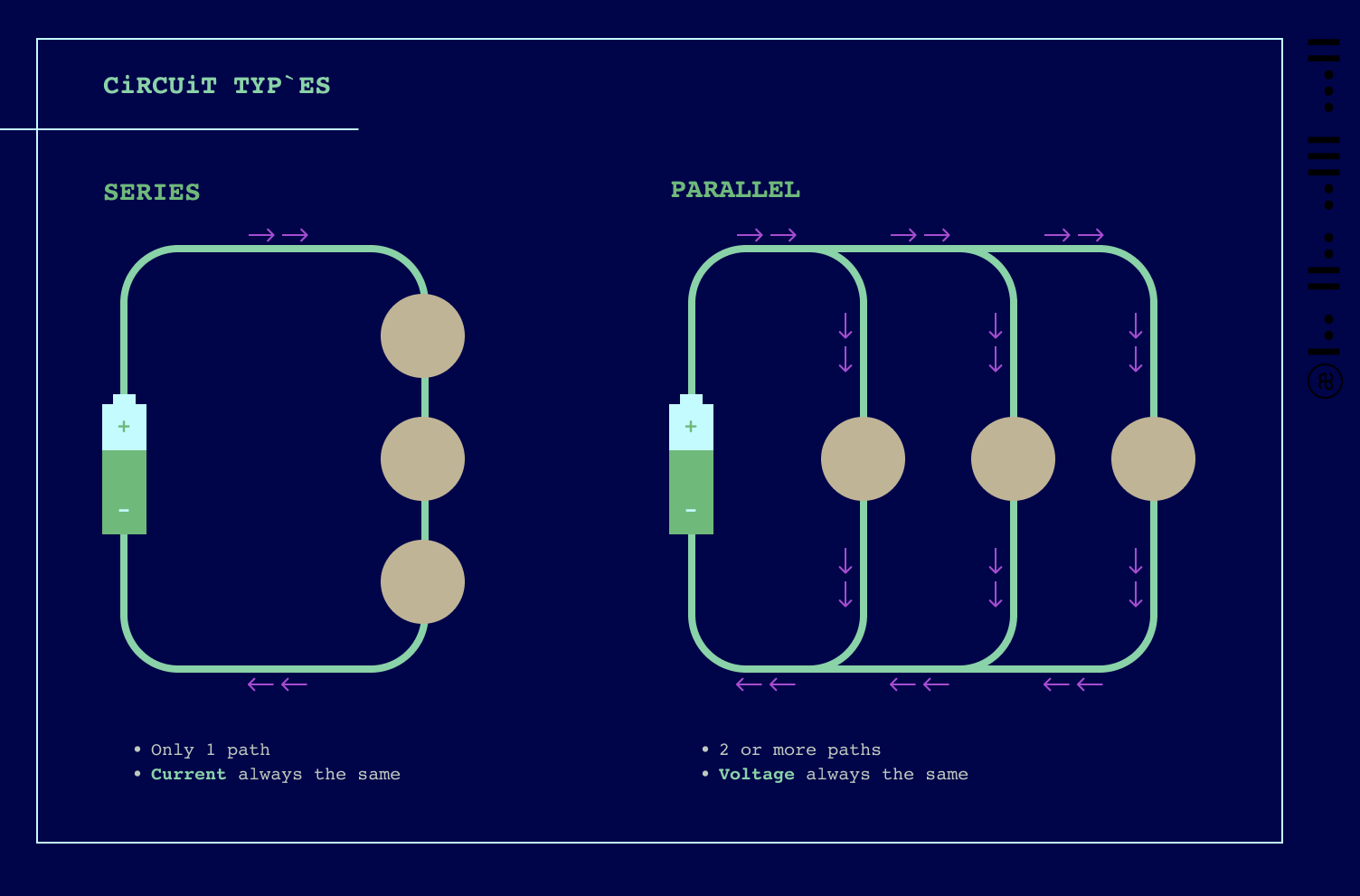
<< radio home
<< index
by disinfoniacs #69 & #1
>>>>

Current flowing through a circuit can be harnessed to perform work with the use of various components like capacitors and inductors, which are essential for circuit design. There are two fundamental ways of connecting these components in a circuit: series or parallel.
A series circuit has all components connected in a straight line, like a train on tracks. There is only one path for the current to flow through all the components in that circuit. Because of this, the DC current is the same through all components in the series circuit, like water flowing through a pipe. In other words, the current has to pass through each component in the series to complete the loop.
In contrast, in a parallel circuit, components are connected with two or more paths, allowing current to flow through different elements independently. This means the voltage is the same across all the components in a parallel circuit. If one path is broken or has a component failure, the others can still function, so the overall circuit remains operational. To envision a parallel circuit, think of a road that splits into two paths, but both paths meet up again at a later point, like a fork in the road.
The choice between series and parallel circuit connections depends on the requirements of the circuit and the goal that the circuit is designed to achieve. A series circuit may be useful when the components need to have a specific order, or when it's desirable to have uniform current flow, whereas a parallel circuit can be useful when the reliability and redundancy of the circuit is a top priority. The arrangement of components in a circuit plays a vital role in the functionality of the system, and selecting the right configuration can be critical for the successful operation of the circuit.
<< previous lesson | next lesson >>
---
<< radio home
<< index
